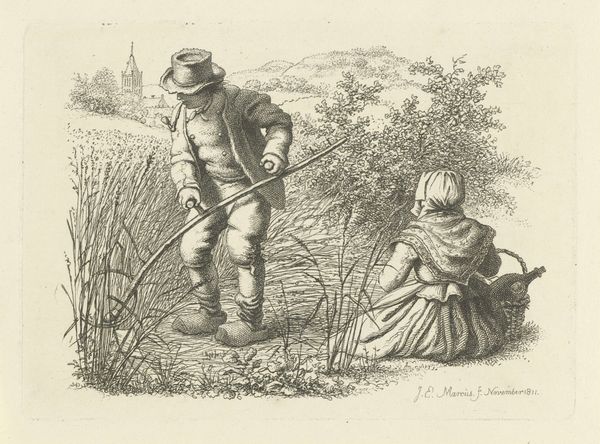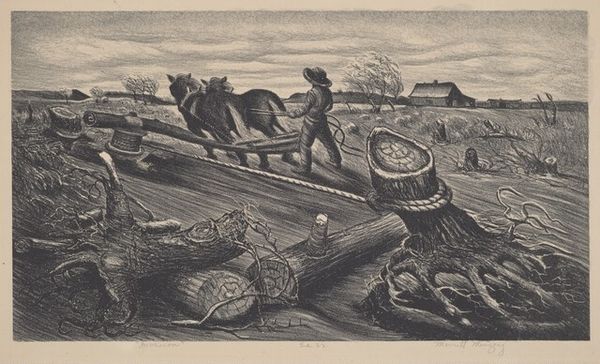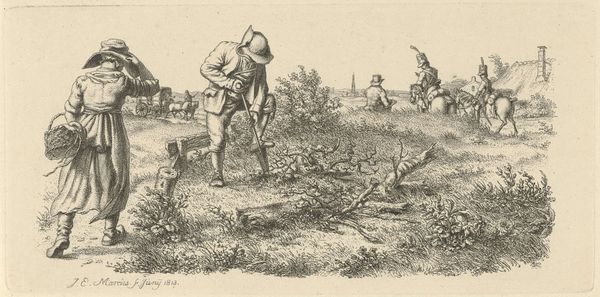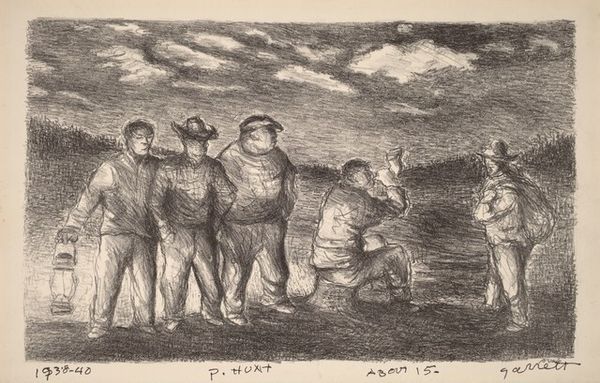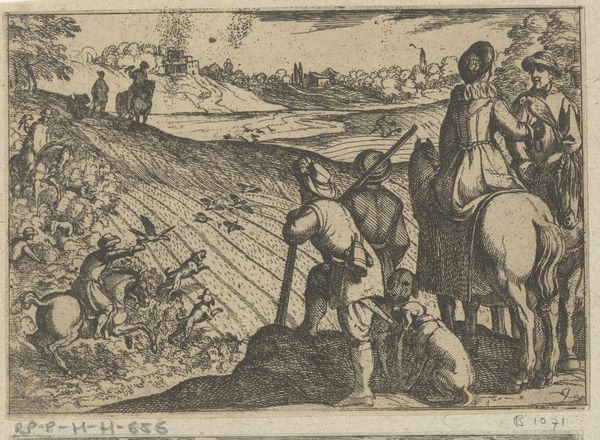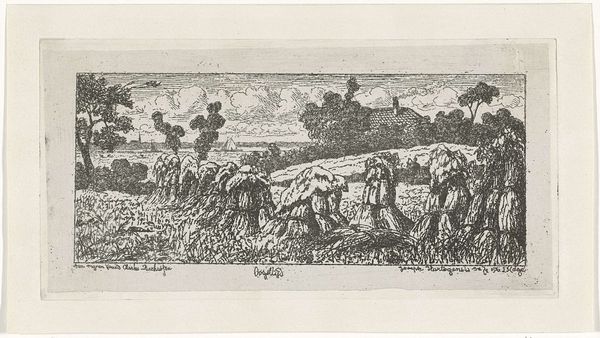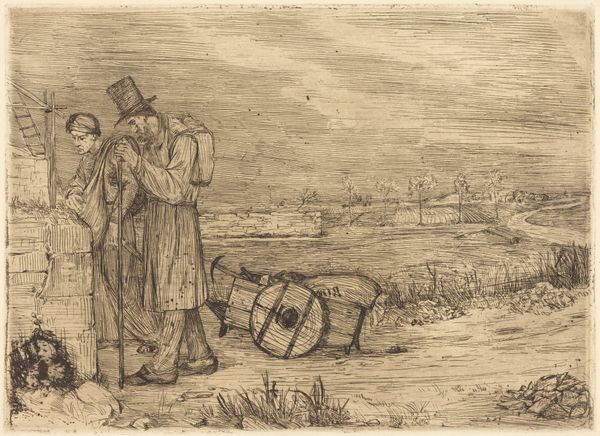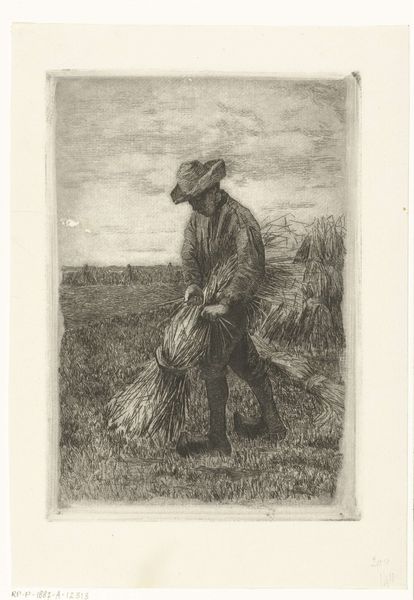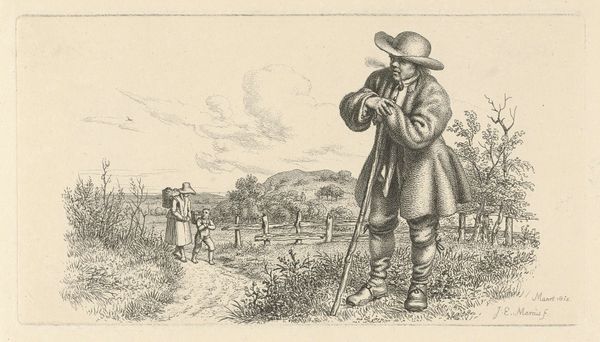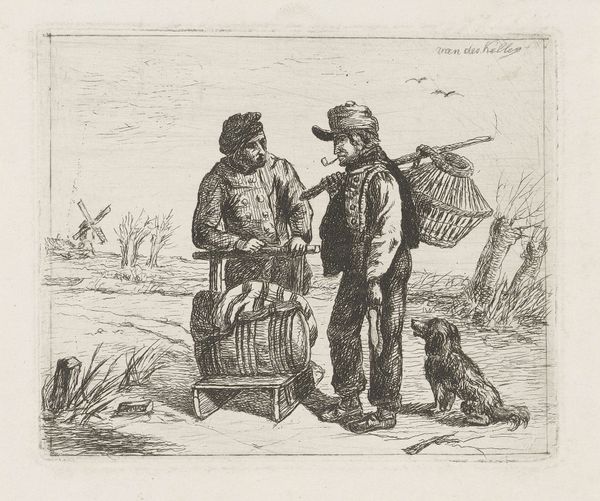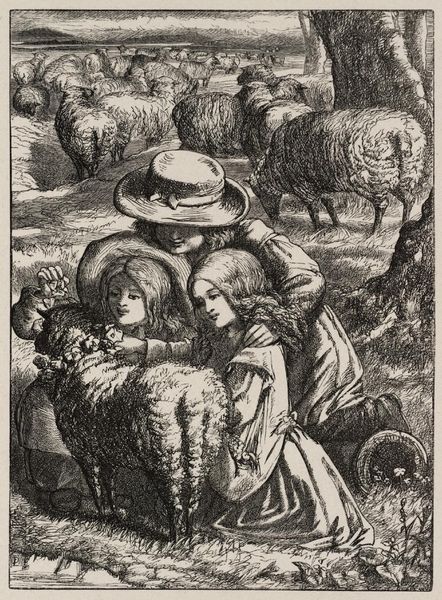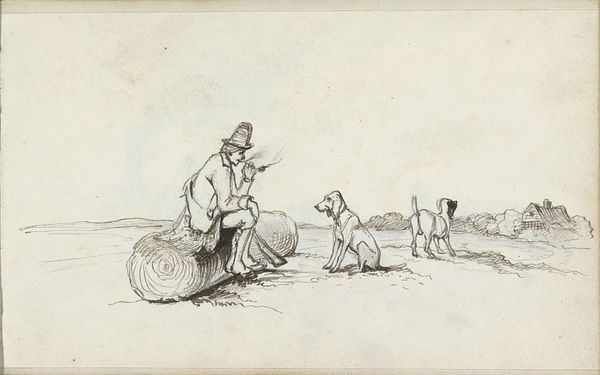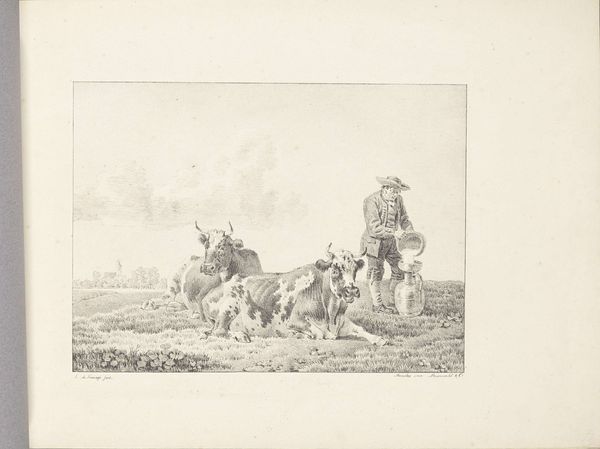
drawing, print, pencil
#
pencil drawn
#
drawing
# print
#
landscape
#
social-realism
#
pencil drawing
#
pencil
#
genre-painting
#
realism
Dimensions: image: 22.9 × 32.5 cm (9 × 12 13/16 in.) sheet: 27.5 × 37.6 cm (10 13/16 × 14 13/16 in.)
Copyright: National Gallery of Art: CC0 1.0
Curator: This is Merritt Mauzey's "Bumblebee Cotton," a pencil and print artwork from the 1940s. It's quite evocative, isn't it? Editor: My first impression is one of immense physical burden. The figures are bent, almost collapsing under the weight of the cotton. It speaks volumes without saying a word. Curator: Exactly. The social realism style captures the hardship of agricultural labor. Mauzey focuses our attention on those often made invisible. We have three figures in the foreground working the fields, and a sense of their isolation in the landscape. It becomes a statement on race, labor, and economic disparity during that period. Editor: And the symbolism is so thick you could cut it with a knife. The cotton itself, historically representing wealth derived from exploitation, now signifies grueling labor for those same people. The setting evokes an understanding of this continued economic system of racial labor in America. Curator: It also draws on visual memory. Consider the historical depictions of enslaved people in cotton fields. Mauzey builds upon those past representations, subtly prompting us to reflect on the links between slavery and post-slavery economic systems. There's a cyclical aspect that resonates. Editor: I agree, this cyclical understanding is deeply powerful, and further communicated in the landscape which seems unending. What do you make of the horizon and its small houses set in the distance? Curator: The homes provide context and setting. The composition suggests their connection to the landscape, their labor inextricably linked to its output. The choice to set them apart at a distance can reinforce a sentiment of isolation, perhaps, from society and those removed from this toil. Editor: And isn't the artist's hand present throughout this work? In this drawing, one senses the history not just in the subject matter, but in the very act of its creation, in the act of its draughtsmanship! Curator: Absolutely. Mauzey makes a point. By emphasizing the real, by highlighting the figures working, "Bumblebee Cotton" insists on bearing witness to an ongoing narrative, while asking tough questions of race and American identity. Editor: Yes, Mauzey urges us to contemplate this narrative beyond the symbolism alone.
Comments
No comments
Be the first to comment and join the conversation on the ultimate creative platform.
